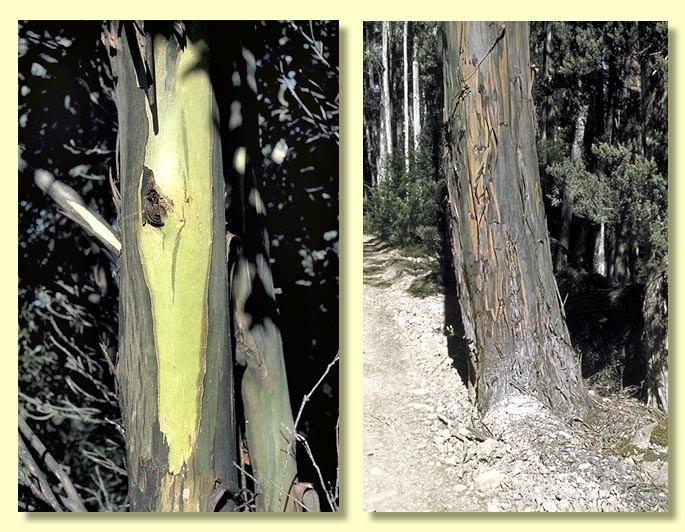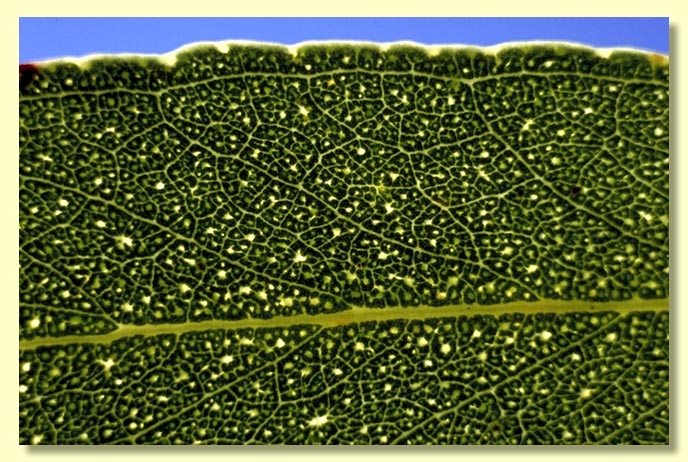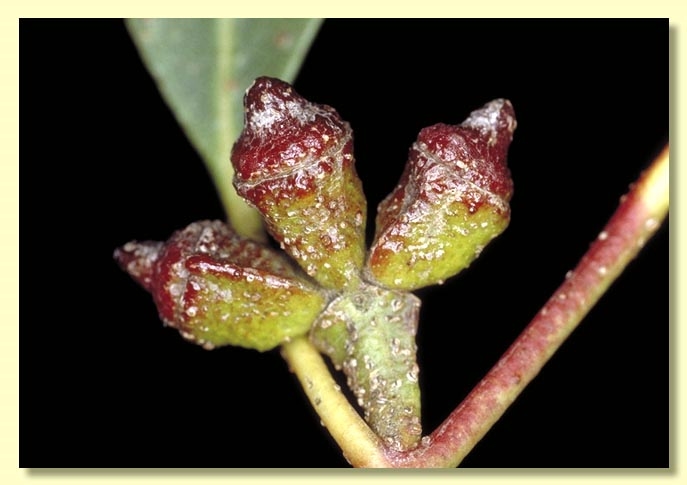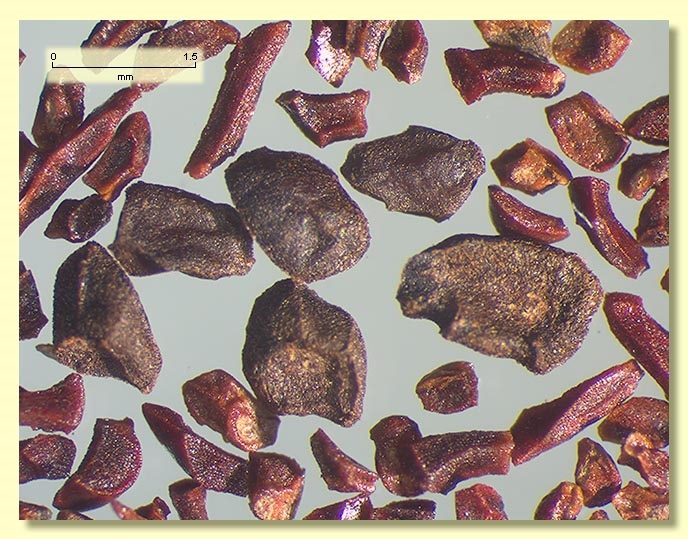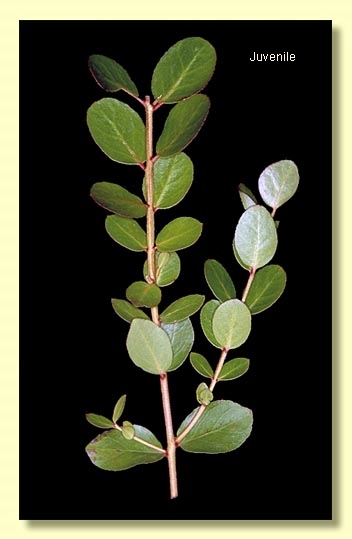Euclid - Online edition
Eucalyptus johnstonii
Eucalyptus | Symphyomyrtus | Maidenaria | Euryotae | Semiunicolores
Eucalyptus johnstonii Maiden, Crit. Revis. Eucalyptus 6: 280 (1922).
T: Tasmania. Mt Wellington, 2000' and lower, T.B. Moore s.n., anno 1886 Lectotype: MEL [MEL1610541]; isolecto: MEL [MEL1610560]; fide Bean, A.R., Telopea 12(4): 517 (2010).
Eucalyptus muelleri Moore, T.B., Papers and Proceedings of the Royal Society of Tasmania: 207-9 (for 1886, publ. 1887). T: "between the townships of New Norfolk and Victoria ... was first observed on a saddle of the dividing range between the Huon and Derwent water-sheds." (no specimen mentioned).
Bark smooth throughout or with some persistent, fibrous, grey bark on base of trunk; smooth bark yellow to orange-brown or greenish.
Juvenile growth (coppice or field seedlings to 50 cm): stem square in cross-section and prominently winged, warty; juvenile leaves opposite and sessile to subsessile for many pairs, orbicular to ovate, 2.5–6 cm long, 1.3–4.5 cm wide, margin usually crenulate, base tapering to rounded, apex rounded at first then pointed on later leaves, glossy, green.
Adult leaves alternate, petiole 1.5–3 cm long; blade broadly lanceolate to lanceolate to falcate, 6.5–15 cm long, 2–4 cm wide, flat or undulate, base tapering to petiole, margin entire or subcrenulate, concolorous or slightly discolorous, glossy, green, side-veins greater than 45° to midrib, densely to very densely reticulate, intramarginal vein well removed from margin, oil glands island or intersectional.
Inflorescence axillary unbranched, peduncles stout, 0.3–1 cm long, buds 3 per umbel, sessile (rarely with 0.2 cm pedicels). Mature buds oblong to ovoid to diamond-shaped to obovoid, 0.8–1.1 cm long, 0.6–0.9 cm wide, green or red-green, usually slightly warty, angled longitudinally, scar present, operculum rounded to flattened and umbonate or beaked, stamens mostly inflexed, anthers cuboid to oblong, versatile, dorsifixed, dehiscing by longitudinal slits (non-confluent), style long, stigma blunt, locules 3 or 4, the placentae each with 4 vertical ovule rows. Flowers white.
Fruit sessile, obconical, hemispherical or campanulate, 0.7–1 cm long, 0.9–1.3 cm wide, often angled longitudinally, disc raised-convex or level, or slightly descending, valves 3 or 4, strongly exserted.
Seeds dark brown or black, 1.5–3 mm long, ovoid or flattened-ovoid, dorsal surface smooth, hilum ventral.
Cultivated seedlings (measured at ca node 10): cotyledons bilobed to oblong; stems square in cross-section and winged, warty; leaves sessile or shortly petiolate, opposite for at least 12 nodes, ovate, 3–6 cm long, 1.3–3.2 cm wide, base rounded to tapering, margin distantly crenulate, apex rounded to pointed, glossy, green.
Flowering has been recorded in all months from October to May, with peak flowering from February to April (see Williams & Potts, 1996, p. 76).
A medium-sized to tall tree endemic to south-eastern Tasmania in montane forests on sites subject to some waterlogging on peaty, sandy soils, e.g. on Mount Wellington, Bruny Island, Tasman Peninsula.
E. johnstonii has yellowish smooth bark and a crown of glossy green leaves, and juvenile growth with opposite green leaves on square warty stems.
Eucalyptus johnstonii belongs in Eucalyptus subgenus Symphyomyrtus section Maidenaria, a large group of species more or less restricted to south-eastern Australia, characterised by bilobed cotyledons, simple axillary inflorescences, buds with two opercula, stamens with versatile anthers and flattened seeds with a ventral hilum. Within this section, E. johnstonii, with four other species, forms series Semiunicolores having smooth bark, subcrenulate and strongly glandular juvenile leaves opposite for many nodes, a crown of green, densely to very densely and finely reticulate and highly glandular adult leaves, buds in threes, and fruit with relatively prominent valves. Three of the species in this series are closely related Tasmanian endemics, viz. E. johnstonii, E. subcrenulata and E. vernicosa.
E. johnstonii has larger adult leaves, buds and fruit than E. subcrenulata and is usually a taller tree. These two species form a morphological continuum. E. vernicosa is a small-leaved shrub of exposed high mountain areas. The remaining two species in the series Semiunicolores, E. imlayensis and E. elaeophloia, are high altitude localised endemics in southern New South Wales and Victoria respectively and have more greyish green juvenile leaves.

